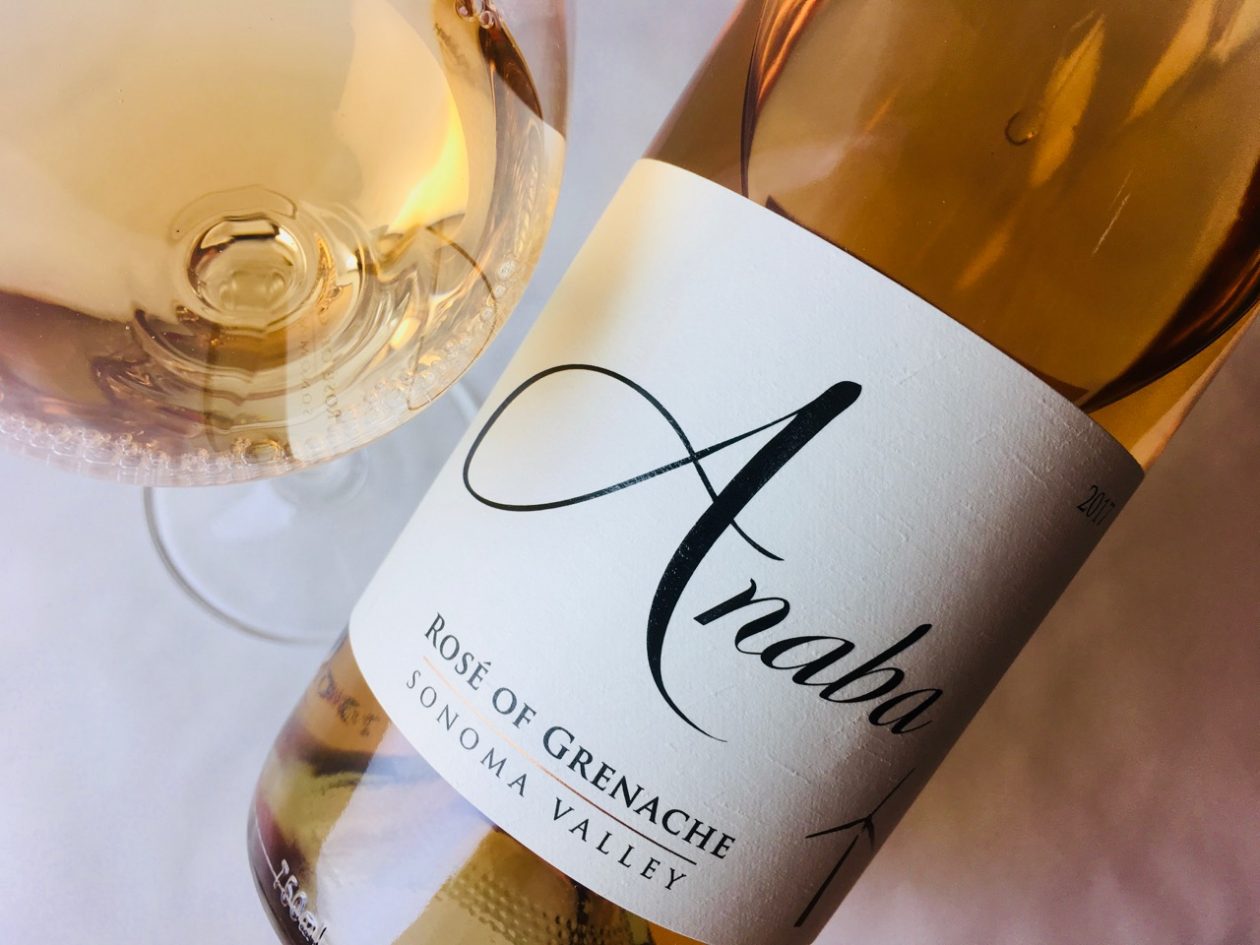
The Grenache for Anaba’s rosé was grown in the Landa Vineyard, in the foothills of the Mayacamas. Brix at harvest 23.3°, and the fruit was whole-cluster pressed, then fermented and aged in stainless steel. The result is a pale, orange-y salmon color offering a fragrance of macerated strawberries — almost strawberry jam — and apple blossoms. The body has a satiny, coating texture, plus more of that peach-strawberry flavor, but this time steeped in black tea. The finish offers some balancing grit and gravity.
This is a wine for charcuterie.
2017 Anaba Grenache Rosé Sonoma Valley
13.5% abv| $28 (sample) 170 cases made

I’ve been living in Northern Spain near the Emporda wine region where grenache is king. Would be interested to come back to the States and compare the difference. Difficult to find US wines here in the local shops.
Hi Eric, thanks for your comment. In my experience, Garnacha (Spanish) red wines trend in two directions: plush, plump, and oaked, an international style made to please an export market; and savory, rounded, and refreshing, to mate with the local food.
California Grenache wines tend to be ripe, but there are some producers working in that more linear style, particularly the Rhone Ranger wineries. Grenache rosé is of course ubiquitous everywhere, perhaps most famously from Provence, but rosé wine as a category tends to be tinkered with less overall, so stylistic differences have to do more with ripeness and terroir than élevage.
To your point about U.S. wines’ availability in Spain and Europe: Shipping cost and taxation drive prices high, so mid-priced U.S. wines have a hard time competing with local options. American wineries with a gold reputation can be successful, but they’re still a tough sell.